Ever driven by a street with curbs full of water-damaged items after a big rain? There’s no way around the fact that basements often get wet, especially in rainy Portland, Oregon. So the flooring you choose for your basement has to be either waterproof or easily cleaned and dried. COOPER Design Build is here to offer our expert insights as area remodelers to help you choose the best flooring for your Portland basement.
Why Do Basements Get Wet?
Water can get into your basement in a number of ways. Because it’s the lowest level of your house, that’s where water will flow if you have a leak from a pipe or water heater or a flood from runoff outside.
But water also is very, very good at forcing its way through basement walls. The backfilled dirt around your foundation is generally softer than the compacted soil farther out, so it absorbs more water. That water builds up, presses against your foundation and, through the beauty of hydrostatic pressure, pushes through cracks in your concrete walls or floor, through openings for waterlines, through the joint between your basement walls and floor, or through the pores of the concrete itself.
In order to avoid wet basement flooring in the first place, you’ll need to be sure your foundation and basement are designed with the highest levels of waterproofing and drainage possible, which is best addressed during or initial construction or by having your existing home waterproofed by a professional.
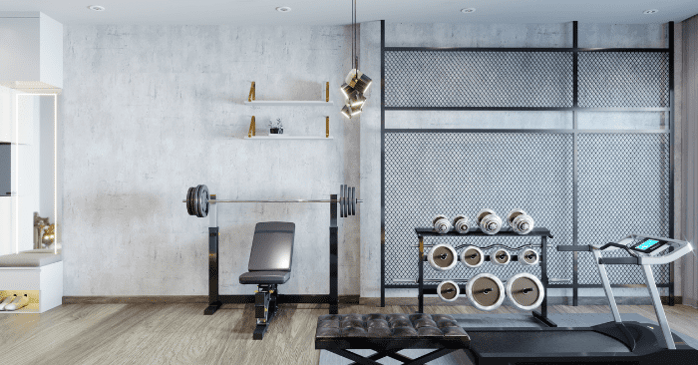
How will you use your basement space?
The type of flooring you choose for your finished basement will be determined by the uses you have planned for the space. In some cases, you might choose different materials for different rooms for the same basement remodeling project.
You might want a different floor for a bedroom than for a laundry room or home gym. Think about how warm you want the floor to be and whether softness is important. Assess how even the floor is, whether there is a plywood subfloor or just concrete, and how smooth it is. Also, are you aware of a water-intrusion problem that you just can’t quite beat? All of those factors, plus your budget, will come into play when you’re choosing flooring.
If comfort for bare feet is important, your options are subfloor heating, insulation, or carpeting.
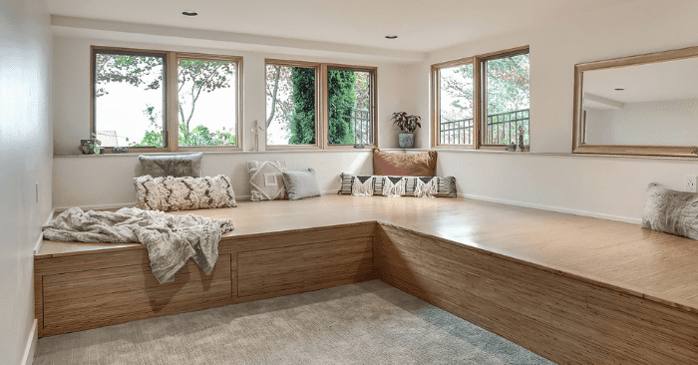
Leveling the Floor for a Finished Basement
A level floor is essential for any finished basement, ensuring the longevity and appearance of the chosen flooring material. Over time, basement slabs can shift, crack, or become uneven due to settling or moisture issues. When working with an older basement slab, these irregularities can be particularly pronounced. It's crucial to address these discrepancies before installing flooring for optimal results. However, be forewarned: if your basement slab is very old and uneven, the leveling work required can be more costly than you might initially anticipate.
Engineered Vinyl Planks
This relatively affordable material is waterproof, comes in patterns that look like wood or tile. The planks have a cork underlayment for cushioning that shouldn’t get wet, but installing a thin vapor barrier on top of a concrete slab will keep the water away. This floor “floats”—isn’t attached to the subfloor—so it could "bounce" if your subfloor is uneven.
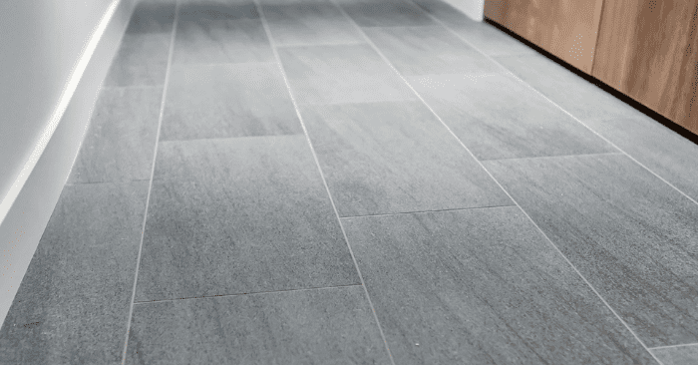
Tile Planks or Ceramic/Porcelain Tiles
Tiles are waterproof, durable, and come in a large variety of styles and colors. They can be expensive and should be installed directly onto an even concrete floor. They’re also cold on the feet, hard, and don’t absorb sound, so they'll likely require area rugs to make the space more cozy.
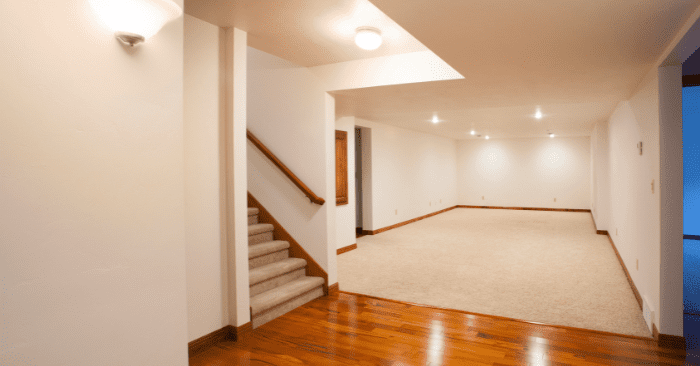
Carpet
This can be the cheapest option, and it is warm and soft on the feet. Carpeting also works with various kinds of subfloors and can mask areas that aren’t completely smooth and even. Of course, carpet isn’t waterproof, so it’s not great if your basement is likely to get wet. Vapor-barrier carpet pads are available. You also could opt for carpet tiles with self-adhesive backs. They allow you to create colorful patterns if that’s the look you’re going for. They are more expensive than wall-to-wall carpeting but still cheaper than hard-surface floor coverings. It’s relatively easy to replace individual tiles, but if you have a water problem, the adhesive backing can lose its stickiness.
Sheet Vinyl
Here’s another less-expensive choice. It costs more than carpet but less than some of the harder surfaces mentioned here. It’s waterproof and softer and warmer than concrete or tile. Some people think it looks dated or cheap, but it could be a solution for a specific room, such as the laundry room. Vinyl will show unevenness in your subfloor if it’s not smoothed and leveled. You also could opt for glue-down vinyl planks or tiles.
Engineered Hardwood Floors
Solid hardwood floors aren’t a good basement choice because of the way wood expands and contracts with changing moisture levels, and manufacturers won’t warranty them below grade. Engineered hardwoods aren’t as susceptible to expanding and contracting due to their manufacturing process. However, if you know you have a persistent moisture problem, they’re not a good idea. Engineered hardwood can be glued down or floated on concrete, which should be level. This material looks great, and it’s easier on the feet than the harder-surface options, but it's not a budget option.
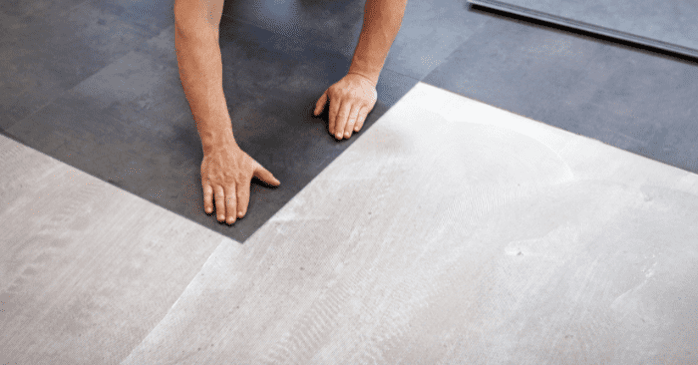
Engineered Vinyl Plank (EVP) for Basements
Engineered Vinyl Plank, often referred to as EVP, is a resilient flooring option that combines the durability of vinyl with the aesthetics of hardwood. It is created by fusing several layers together, primarily composed of a core layer made from PVC materials, a vinyl top layer, and a protective wear layer. When installing it in a basement, EVP can be directly laid over a subfloor or even existing flooring, making the process relatively straightforward. Price-wise, EVP sits in a moderate range: it's generally more expensive than traditional vinyl or laminate but less expensive than solid hardwood or tile.
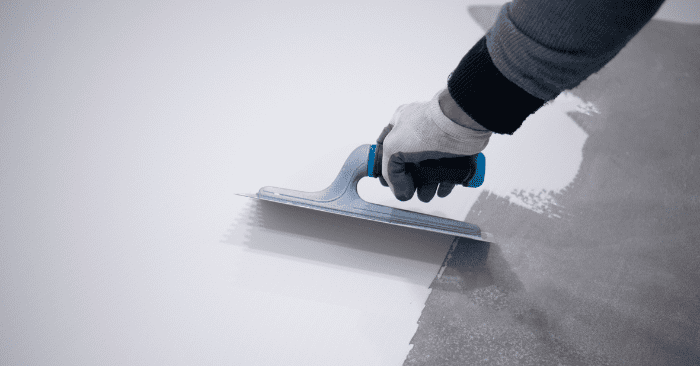
Painting the Basement Floor
For homeowners on a tight budget, there's a cost-effective alternative to traditional basement flooring: painting the concrete slab. Using concrete paint or an opaque stain can effectively mask many of the floor's imperfections, giving it a fresh, updated look. Not only is this method wallet-friendly, but it also allows for creativity, as there's a range of colors and finishes available. This approach can enhance the basement's aesthetic while simultaneously providing a protective layer against moisture and wear.
Stained or Acid-Etched Concrete
You can obtain some amazing looks with stained and acid-etched floors, compared with painted concrete. Such floors are waterproof and don’t require a subfloor. Of course, they’re also cold, hard, don’t absorb sound, and are more expensive than you might expect because of the prep work involved.
Ready to talk about your dream basement remodel or other Portland home renovation project? We can't wait to meet you! Schedule a consultation here!










